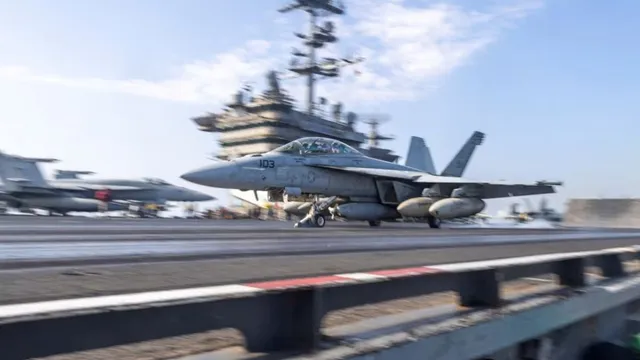- By Supratik Das
- Tue, 24 Jun 2025 08:20 PM (IST)
- Source:JND
In a closely-coordinated, high-risk strike mission the "Operation Midnight Hammer", the United States attacked three Iranian nuclear plants Fordow, Natanz, and Isfahan with a precised air campaign employing not only its B-2 Spirit stealth bomber and Tomahawk cruise missiles, but also five other previously unknown weapon systems, which have been classified till now. The US armed forces used advanced stealth, deception, and electronic warfare devices to maintain precision during the operation, officials noted. The operation, involving several US commands such as Strategic Command, Cyber Command, Space Force, and Central Command, targeted Iran's nuclear capabilities without stirring larger conflict or civilian damage.
Seven B-2 Spirit stealth bombers departed Whiteman Air Force Base, Missouri, and rendezvoused mid-flight with refuelling tankers and protection aircraft and entered Iranian territory. All aircraft were armed with GBU-57 Massive Ordnance Penetrator (MOP) bombs, 30,000-pound precision-guided munitions to target deeply buried nuclear facilities. The first strike, according to US officials, happened at 6:40 PM EST (2:10 AM Iran time) against the Fordow enrichment plant. The total of 14 MOPs was dropped over a period of 25 minutes on all three facilities.
5 'Secret' Weapons Used For the First Time In Iran Attack
Besides the listed arsenal, US troops deployed five weapon systems that were previously unrecognized in any previous mission:
1. AGM-88E Advanced Anti-Radiation Guided Missile (AARGM)
The AGM-88E AARGM, intended to counter enemy radar and Surface-to-Air Missile (SAM) systems, was fired by US fighter escorts to down Iran's Integrated Air Defense System (IADS). The missile flies at more than Mach 2 speeds and targets electronic emissions, so it is extremely useful on SEAD (Suppression of Enemy Air Defenses) missions.
2. ADM-160 Miniature Air-Launched Decoy (MALD)
MALDs were fired to replicate US fighter aircraft on hostile radar, deceiving Iranian air defense and distracting from genuine strike aircraft. The ADM-160 has the capability to fly on its own and produce the radar image of a full-size fighter, successfully saturating hostile tracking systems. MALD-J also jammed communications and radar.
3. AGM-158 Joint Air-to-Surface Standoff Missile (JASSM)
Although reserved, stealthy AGM-158 JASSM cruise missiles were preloaded on F-35 fighters in case primary strikes failed. The missiles, with a range of more than 900 kilometers, can target hardened targets and are armed with a 1,000-pound warhead.
4. AGM-154 Joint Standoff Weapon (JSOW)
The JSOW was another backup system, intended for deployment against Iranian airbases if fighter jets were scrambled. Ultimately, the missiles were not used as Iran’s air force never took flight.
5. E/A-18G Growler Electronic Attack Aircraft
The Growler, an advanced electronic warfare variant of the F/A-18 Super Hornet, performed escort and jamming duties during the attack. With its robust EW suite, it shut down radar and communication networks, paving the way for the B-2s.
As the lead-up to the central bombing strike reached its peak, a US Navy submarine in the CENTCOM area launched over two dozen Tomahawk Land Attack Missiles (TLAMs) against key surface targets throughout Iran. The initial attacks were designed to take out command and communications facilities and radar installations. The air package that assisted the strike consisted of F-22 Raptors and F-35 Lightning IIs, which conducted intelligence, surveillance, and escort functions. These fifth-generation stealth attack aircraft provided air dominance and denied interception attempts.
ALSO READ: A ‘Mosquito’ Can Change The Face Of War: Here's The First Look At China’s New Micro Drone | Watch
In what US officials called one of the most tightly controlled military operations in recent history, the operation was carried out with minimal radio contact to prevent detection. General Dan Caine, Joint Chiefs of Staff Chairman, explained that Iranian jets "did not fly" and "Iran's surface-to-air missile complexes did not see us." In total, there were about 75 precision-guided munitions fired on the mission, and all the planes landed safely back at their bases.

